
|   |

|   |
An entire season in a few hours - Dr. Annapoorna Kuppuswamy e-mail: a.kuppuswamy@ucl.ac.uk Pics: Vivekanandan December 30, 2013
On the morning of day two of the Purush conference, one was still on a high from scintillating classical and contemporary performances of the previous evening. With the music still ringing in my ears, walking past the roadside vegetable market in the heart of Mylapore quickly acknowledging Kapaleeswarar on my way to Bharatiya Vidya Bhavan, my footsteps quickened not wanting to miss any part of the proceedings. As I walked in, I was greeted by a rare sight, a galaxy of male Bharathanatyam gurus, dressed in impeccable white dhothis and jubbas with understated zari angavastrams, milling around were their senior disciples. It was soon time to start proceedings. Anita swiftly managed to gather everyone in and invited all the gurus on stage. A short audio-visual presentation with photographs and video clips of gurus Udupi Laxminarayan, K Kalyanasundaram, Herambanathan, CV Chandrasekar, VP Dhananjayan, Janardhanan, CK Balagopal, Narasimhachari, Ramli Ibrahim, Adyar K Lakshman and Dr Sunil Kothari was shown kicking off the proceedings. It was unfortunate that Guru Adyar K Lakshman could not attend the ceremony due to ill health and Roja Kannan filled his rather large shoes. Kartik Fine Arts and Arangham honoured the gurus by presenting a kadhi angavastram and a chin mudra statuette, specially designed to reflect the knowledge, years of dedicated service and their contribution to the field of dance. Lakshmi Vishwanathan made a lovely speech recollecting anecdotes and personal experiences with all the gurus. After a quick coffee break, the second session commenced. Ashish Khokar, presented a compilation from the Khokar Archives, called Male Moves, a film exploring the male dancer in the last century. Rarely seen clips of Uday Shankar, Ram Gopal in his famous Garuda dance and Ted Shawn’s dancing Nataraja enthralled the audience. Khokar was nudging people to think about archiving dance in the broader context as social anthropology and not just dance history. With ever increasing number of dancers and explosion of social media, archiving in the current day is a very different ball game. What was obvious from the films was the lack of screen friendliness of Indian classical forms when compared with its contemporary counterparts that are more often than not tailored for the camera and hence amenable to better archival of their original impact. 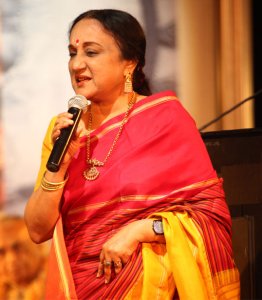 Lakshmi Vishwanathan 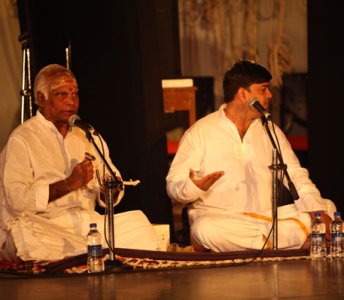 Guru Herambanathan & vocalist 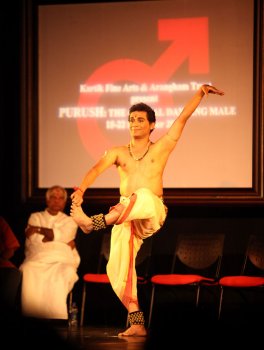 Shanmugha Sundaram 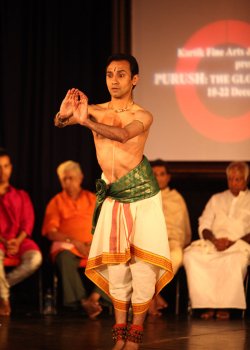 P Praveen Kumar The final session of the morning was a triple bill of Vazhuvoor, Thanjavur and Kalakshetra Bharatanatyam demonstrations by eminent gurus. The tantalising presentations raised many questions in one’s mind about the origin, evolution and the music used by various schools but the lack of time meant we had to file it all away for later. The Vazhuvoor demonstration started off with Dr. BM Sundaram talking about how dance was integral to life even before it became a performance art. Warriors’ dancing in the battlefield when victorious was held up as a clear example of men dancing outside of the performance context. Dancer Shanmuga Sundaram gave a graceful and endearing performance of Mandooka shabdam from the traditional repertoire. Guru Herambanathan of the Thanjavur style, rarely seen outside Thanjavur, and still practising the art form in Thanjavur, went on to demonstrate with his son Hariharan performing a traditional item. The panel presentations concluded with Prof Chandrasekar’s short presentation on Kalakshetra style with Parveen Kumar elegantly demonstrating the rather angular and crisp style of Bharatanatyam. One didn’t have much thinking space with so many presentations and topics being covered ranging from archiving to technique. Emerging from the world of dance into the pleasant midday December sun reminded me about how hungry I was. A quick lunch at Karpagambal mess opposite to BVB and some shopping for dance essentials at Shanthi was accomplished before heading back for the evening’s performances. Contemporary is not my cup of tea but Navtej Johar’s contemporary Bharatanatyam was anything but disengaging. A paper skirt, plate full of bark dust, a broom, slow deliberate movements punctuated by fast paced footwork, compelling use of lights describing Sita’s ordeal before heading into the forest was a performance that drew the audience into the narrative. Love it or loathe it but never be indifferent to it, is I think, the idea behind a lot of the contemporary work 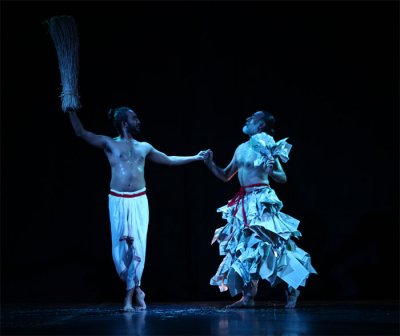 Sudeep Kumar & Navtej Singh Johar 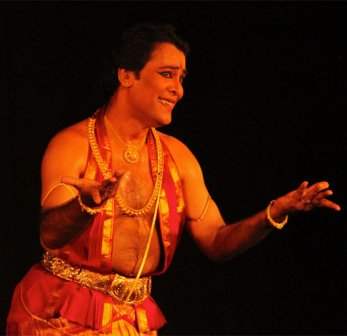 A. Lakshmanaswamy ; Photo: Nikhita Kapoor 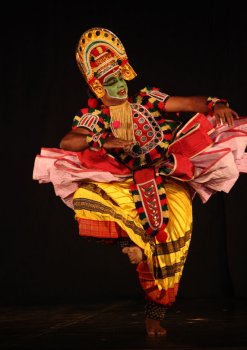 Suresh Kaliyath  Sinam Basu Singh 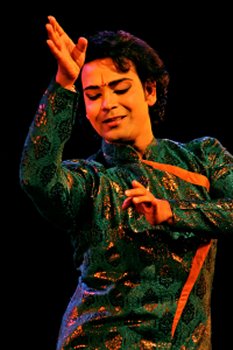 Anuj Mishra ; Photo: Nikhita Kapoor  Mrutyumjaya Sarma ; Photo: Nikhita Kapoor The classical mixed bill started off with the exuberant traditional theatre art of Ottanthullal by Kalamandalam Suresh Kaliyath where the story of Bhima and Hanuman was the theme. The interactive nature of the piece with some comic elements drew a few laughs and it was gladdening to see some of the traditional art forms being presented at a major festival in the heart of the Chennai season. This was followed by another rare performance of Manipuri by Sinam Basu Singh. The fluid elegant moves with no discernible beginning or end gave it an almost surreal quality. Light on his feet, Sinam beautifully depicted the ten avatars of Vishnu with such clarity that it is a real shame we do not get to see more of such excellent Manipuri in Chennai. Sinam gave way to yet another strong self-assured brilliant Kathak dancer Anuj Misra. With ultra-precise rhythm and incredible command of space, Anuj created the illusion of dancing in a Mughal court with simply a flick of the hand and a turn of the head. Gati, demonstrating various rhythmic patterns from different gharanas was the highlight of his performance. The final part of the mixed bill was presented by a rising star of Kuchupudi, Pasumarthi Mruthyumjaya Sarma who again enthralled audiences with his Shivashtakam. After having seen such varied art forms and the allure of watching Therukoothu Draupadi Vasthiraparanam by Purisai Doraiswamy Kannappa Thambiran Paramparai Therukoothu Manram in the outdoor at Nageswara Rao Park, I had to miss A. Lakshman’s Bharatanatyam for the evening. Thanks to the Mylapore traffic I missed quite a bit of the Therukoothu. Duryodhana reciting the names of all his brothers with the narrator reiterating and agreeing with each name in a characteristic vocal approval transported me to my hometown where many street plays do get staged.
The day was nearing to an end and the passage of time had quickened, never to come back. It really was a marathon day and thinking back, the morning’s award ceremony felt like it had taken place quite a few days ago. The conference had certainly managed to condense an entire season into just a few hours. Dr. Annapoorna Kuppuswamy, The Stroke Association Senior Research Fellow, Sobell Department of Motor Neuroscience and Movement Disorders, UK |